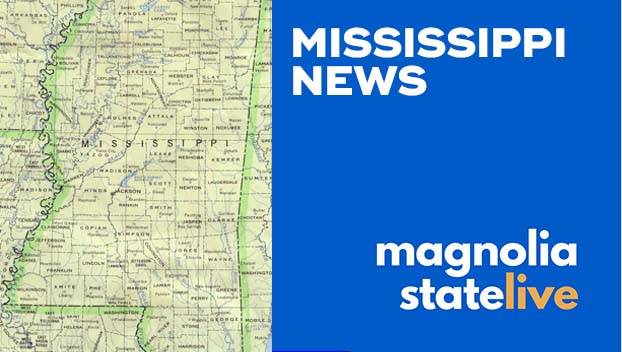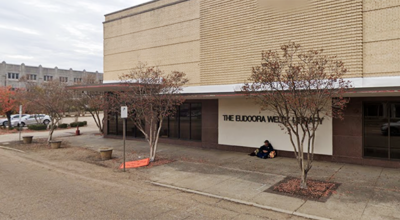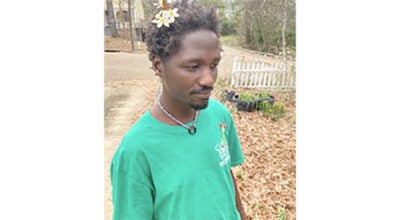Volunteer firefighters say ‘anything goes’ in ever changing role
Published 8:26 am Sunday, March 10, 2019
Kyle Hill has been a volunteer firefighter in Lamar County for 30 years. Since he first began firefighting, his role has changed immensely.
Now, when he receives a call, it could be for any number of emergencies — not just a fire.
“Anything goes — we never know,” he said. “A large portion is medical calls, car wrecks, search and rescue, alarms, inspection of daycare centers, nursing homes and medical facilities, fire education with local schools.”
The job of a volunteer firefighter isn’t what it used to be. In 2016, the last year for which data is available, National Fire Protection Association statistics show fire departments in the United States responded to 35.3 million calls — more than three times as many as in 1981, even though the U.S. population increased by only 42 percent.
During that time, the number of fires responded to decreased to half the number of 1981. In fact, by 2016, fires made up less than 4 percent of all calls fire departments handled, while medical emergencies accounted for 68 percent.
False alarms, mutual aid, hazardous materials and other hazardous conditions made up the rest of the calls.
In Lamar County, only 1 percent of the calls volunteer firefighters answer are house fires. Seventy percent are medical-related, 10 percent are wood- and grass-fires and the rest are other issues like suicides, wrecks, domestic altercations, drug overdoses, even bomb threats.
In Forrest County, house fires make up 10 percent of the calls, while 65 percent are medical and the other 25 percent are for such things as car fires, grass fires and other incidents.
“Anytime the public needs something, we’re going to help,” said Chip Brown, Forrest County fire coordinator. “The majority of our calls for service are medical calls.
“We’re able to get there and provide first aid before the ambulance arrives, especially in the rural areas of the county.”
But medical calls aren’t the only assistance Brown’s 225 volunteer firefighters offer.
“We’re providing extraction with wrecks,” he said. “In severe weather, we try to supplement the county and go out there and take care of those (downed) trees — get them up.
“We do have the occasional cat in the tree. We’re here for public service.”
With the amount and variety of work increasing, the retention of volunteer firefighters has become more difficult.
Brown said he didn’t have trouble keeping firefighters in Forrest County, but Lamar County has taken several measures to retain its firefighters. It now has 13 full-time paid positions and eight positions with part-time salaries. The remaining 170 firefighters are volunteers.
It’s also offering a pension-like plan to about 42 volunteers who won’t get paid, but will have money put away for them in a program they can cash out when they’re 65 or disabled.
The money is coming from a federal grant and will pay for so-called “Length of Service Award Programs” for volunteer firefighters in six departments.
The retention efforts are needed as volunteer firefighters are called to respond to a range of duties — some more dangerous than others.
Drew Pylant, Battalion chief at Beaver Lake Volunteer Fire Department, said his firefighters have had to respond to gas and carbon monoxide leaks and wear ballistic vests to medical calls which may involve a volatile domestic situation or a person who may become unexpectedly violent.
“We’ve had several instances of somebody going into a psychotic episode, doing drugs — even low sugar issues can cause a scene to go from stable to violent in a very short period of time,” he said. “You can knock on (the caller’s) door, and the neighbor thinks you’re trying to break in.
“Unfortunately, these are things we’ve had to start thinking about over the past 10-15 years.”
Even responding to wrecks can be dangerous, Pylant said. The crash may have occurred because of a fight between the occupants of the car.
“You don’t expect gunfire at wreck scenes, emergency scenes,” he said. “You don’t expect it at a house fire, but that’s the reality of the world today.”
Then there’s the perils presented by other people who may be passing by the scene. In March 2017, two Sumrall volunteer firefighters working a wreck were killed by a hit-and-run driver.
Volunteer firefighters are called to participate in an increased amount of training. It doesn’t cost them money, but it costs them time away from their families and their regular jobs.
Firefighters train at the Homeland Security Center for Domestic Preparedness in New Mexico to learn to plan for, prevent, protect, respond to, and recover from chemical, biological, explosive, radiological, or other hazardous materials incidents.
They learn how to insert an IV while wearing a biological hazards suit. They are trained to recognize signs of criminal or terrorist activity.
“We’re living in a time where most anything can happen,” said Battalion Chief Reggie Ridgway with the Central Lamar Volunteer Fire Department. “There’s a real danger we could have terrorist activity.
“If we go into a place and see bomb-making material or drug-making material, we need to recognize that.”
Ridgway said a volunteer firefighter has to be prepared for any emergency.
“It’s always — call the fire department,” he said. “If a railroad car goes off the rails and spills chemicals — call the fire department.
“If an 18-wheeler goes off the road — call the fire department. We’re expected to do so much.”
Volunteer firefighters are also trained to respond to active shooter situations, learning how to go inside a building while the shooter is still there and attend to victims.
Hill says when he first started volunteering, his station was getting about 150-175 calls a year. Now it gets 310 in that same time period — that’s about three a day.
“You’ve got to be quick on your toes and flexible,” he said. “Because you never know what’s coming your way.”






